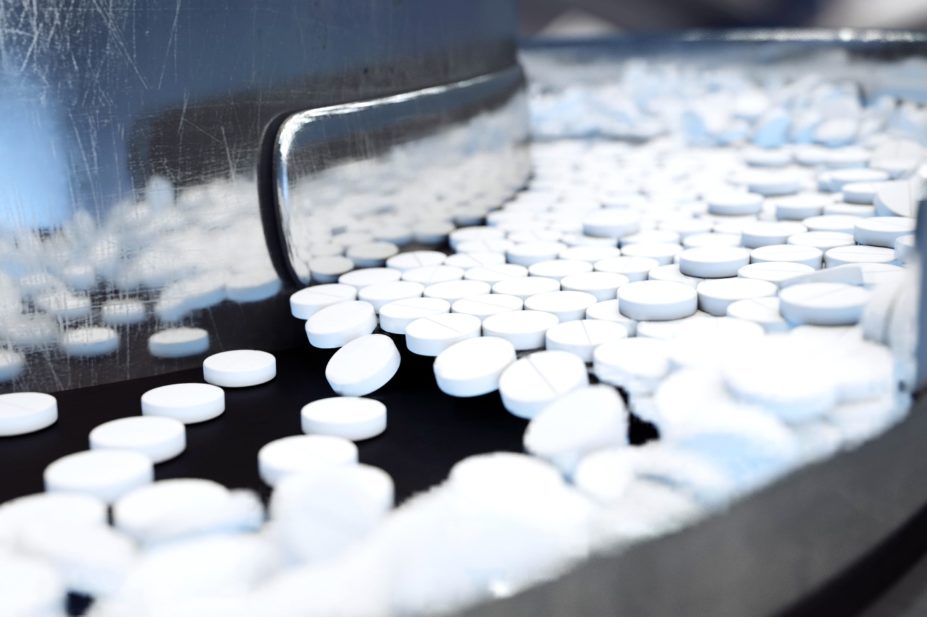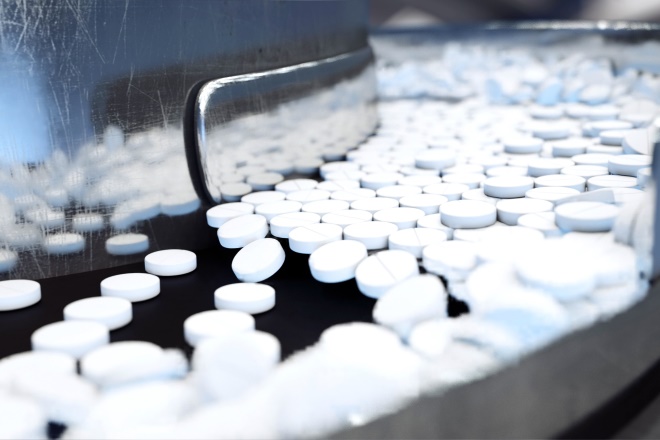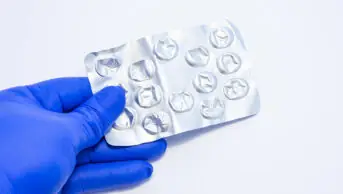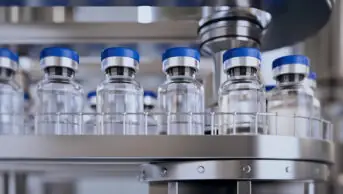
Open access article
The Royal Pharmaceutical Society has made this article free to access in order to help healthcare professionals stay informed about an issue of national importance.
To learn more about coronavirus, please visit: https://www.rpharms.com/resources/pharmacy-guides/wuhan-novel-coronavirus

Source: Shutterstock.com
The scale of the disruption to supply chains from the COVID-19 pandemic is unprecedented, with a wide range of medicines affected
Even before the COVID-19 pandemic, pharmacy was no stranger to medicines shortages. However, medicine supply chains in several countries are now being stretched to breaking point.
In the United States, supplies of essential medicines for patients with coronavirus are running low. Medicines used for sedation and pain management are in high demand; for example, orders for fentanyl, midazolam and propofol have increased by 100%, 70% and 60%, respectively[1]
. Demand for albuterol, a common asthma inhaler medicine, has also risen significantly[1]
. And, in New York City, pharmacies have reported shortages of basic medicines such as paracetamol and azithromycin[2]
.
In Paris, the daily use of some medicines has increased by up to 2,000%[3]
. According a colleague — an intensive care clinician based in France — there is a long list of medicines in severe shortage, including anaesthetics, muscle relaxants, antibiotics and neuroleptics. In hospital geriatric and palliative care departments, midazolam and morphine, diazepam, and clonazepam are in short supply[3]
.
Meanwhile, at the time of writing, a group representing nine major hospitals in Europe — including King’s College Hospital in London — have warned of shortages of important intensive care medicines, such as muscle relaxants, sedatives and pain-killers within two weeks by mid-April 2020 if new measures are not taken[4]
.
Supply chain disruption
It should be possible to meet these demands if supply chains are stable. However, the COVID-19 pandemic has disrupted supplies of several essential drug ingredients and manufactured drugs from China and India, respectively. And, around 80−90% of the UK’s supply of generic medicines — of which India and China are major producers — is imported from other countries
[5]
.
It is not yet clear when production of the raw materials in China and formulation of the end-product drugs in India will fully resume
Raw materials for many essential medicines — known as ‘active pharmaceutical ingredients’ (APIs) — are manufactured in factories in China. These APIs are then exported to countries such as India, where they are formulated into tablets or injectable drugs for worldwide export and sale. Indian companies procure 70% of their raw materials from China, where manufacturing is cheap. Data suggest that the NHS relies on India for 25% of its medicines.
However, in February and March 2020, the spread of COVID-19 forced some Chinese factories to cease production. The workforce were in quarantine and transport between factories was not possible, so supply of raw materials for medicines was severely disrupted.
Since supply had been disrupted, production in and export from India, and other countries, has dwindled[6]
. In response, it was reported on 3 March 2020 that India would provide its own people with essential medicines first. At the time of writing, only excess supplies were being exported to other countries, which would have a detrimental impact on medicine supplies for the NHS in the UK[7]
. The ban was reported to have been partially lifted on 7 April 2020, but it is not yet clear when production of the raw materials in China and formulation of the end-product drugs in India will fully resume[5],[8]
.
Shortages on this scale
The scale of the disruption to supply chains from the COVID-19 pandemic is unprecedented, with a wide range of medicines affected. It is not the first time there have been global medicine shortages, but previous shortages have been on a smaller scale.
For example, factories near Beijing closed for three weeks in 2008 to minimise air pollution during the Olympic Games, but closing API factories led to global shortages.
Then, in 2018, Hurricane Maria struck Puerto Rico and damaged a factory that manufactured the anticoagulant heparin, which disrupted supplies of the medicine[5]
.
Most recently, in 2019, China’s swine flu epidemic saw the deaths of millions of pigs, which led to further shortages of heparin, after shortages of heparin’s active ingredient — which is derived from pig intestines — disrupted production.
The supply chain can also be affected if factories fail regulatory inspections to assure the quality of drug production; for example, reports of contaminated batches of the blood pressure medicine valsartain caused disruption in 2018[9]
.
UK medicine stocks
Thanks to planning for a no-deal Brexit, the NHS should have supplies of essential medicines available to ensure that shortages do not occur. And, to protect the NHS’s current supplies, the parallel export of 80 medicines from the UK — including insulin, paracetamol and morphine used to treat patients in intensive care units — was banned on 20 March 2020[10]
. A further 52 medicines — including several respiratory medicines, antibiotics, analgesics and insulin products — were banned from export on 1 April 2020[11]
.
Even before the onset of the COVID-19 pandemic, there were reports of shortages of dozens of life-saving medicines in the NHS
However, even before the onset of the COVID-19 pandemic, there were reports of shortages of dozens of life-saving medicines in the NHS. In November 2019, a leaked document listed 17 new medicine shortages. The supplies of diamorphine, for example, were “insufficient stock to cover the full forecasted demand in both primary and secondary care”[12]
. As of April 2020, diamorphine remains in short supply[13]
.
Treatments for COVID-19
The demand for any new treatment for, or vaccination against, COVID-19 is, of course, extremely high. Hydroxychloroquine, which is usually used to treat people with rheumatoid arthritis or systemic lupus erythematosus, in combination with the antibiotic azithromycin, has been thrust into the spotlight as a potential treatment.
However, evaluations of this combination’s efficacy are inconclusive and the European Medicines Agency advises hydroxychloroquine should be used only in clinical trials of patients with COVID-19, or for emergency use, rather than general use[14]
. In addition, regular users of the hydroxychloroquine around the world are now facing restricted supplies[15]
.
Other medicines are also being evaluated for their use in treating COVID-19, such as the antivirals remdesivir and favipiravir, as well as treatments to improve lung function, such as pirfenidone or tocilizumab[16]
. The first clinical trial results for these medicines are expected in May 2020, well ahead of the first preventative vaccines, which are expected in mid-2021.
Many of these medicines are small molecules with very low production costs. If these or similar medicines are effective in treating COVID-19, and if their APIs are manufactured in other countries, there could be international competition for limited supplies. The unproven medicine hydroxychloroquine has already been subject to this competition[17]
.
Will supplies be adequate to treat all people with COVID-19 in the UK? Worldwide demand could easily outstrip supply.
How the UK’s supply chain must change
Medicine supply chains are only as strong as their weakest links. If new COVID-19 treatments do emerge, the UK cannot afford to be at the end of long and unreliable supply chains.
Currently, the UK supply chain is weak — we need three new systems in place to protect our access to medicines, both during the pandemic and in the future.
1. Apply stress tests to our supply chains
Following the financial crisis of 2008, stress tests were applied to the banking system. Medicines supply could be tested in a similar way.
If similar tests were applied to the NHS medicine supply chain, they would answer important questions. Questions such as: how many medicines are originally manufactured in China and formulated in India? How would the NHS cope if Chinese supplies continued to be disrupted? For each essential medicine, are there alternative suppliers in other countries? Is there another medicine patients could take, if the preferred is no longer available? What happens if manufacturing in other countries is also affected?
In January 2020, the US Food and Drug Administration started checking the source of APIs for a wide range of essential medicines, soon after the threat of COVID-19 became apparent[18]
. The UK should be following similar procedures.
2. Diversify the sources of our medicines
The NHS should also be using at least three different companies in at least two different countries to source its essential medicines. These companies should also use different sources for their APIs.
At the moment, the NHS will typically have at least two different companies to supply commonly used medicines, but these companies might both be relying on the same company in China for their raw materials[9]
. This mechanism would protect us from future disruption of the supply chain. Online import−export databases can be used to track the source of raw materials of many medicines, and to ensure that raw materials for all essential medicines are sourced from at least two independent suppliers.
3. Produce medicines and diagnostics in the UK
We must consider manufacturing more medicines and diagnostic tests in the UK, instead of relying mainly on imports. In times of shortage, other countries — such as India — hold on to supplies and reduce exports to treat their own people. We could do the same.
The UK is home to large pharmaceutical companies with world-class expertise in drug development. We have the technical ability to set up the mass production of essential medicines in the UK or other countries, if the supply chains fail in China, India or elsewhere. Additionally, the UK could start production of medicines and vaccines against COVID-19 as soon as the first clinical trials show benefits.
Manufacturing drugs and diagnostic tests in the UK will be significantly more expensive than in China and India: in fact, all the new systems proposed would incur cost and inconvenience. But this is the price we must pay to ensure rapid access to the treatments we need.
Andrew Hill, honorary senior visiting research fellow, Department of Translational Medicine, University of Liverpool; adviser to World Health Organization
References
[1] Sheikh K. New York Times. 2020. Available at: https://www.nytimes.com/2020/04/02/health/coronavirus-drug-shortages.html (accessed April 2020)
[2] Kimball S. CNBC. 2020. Available at: https://www.cnbc.com/2020/04/04/coronavirus-pharmacies-struggle-to-meet-demand-amid-supply-shortages.html (accessed April 2020)
[3] Hecketsweiler C. Le Monde. 2020. Available at: https://www.lemonde.fr/planete/article/2020/03/31/medicaments-neuf-grands-hopitaux-europeens-lancent-un-appel-a-l-aide_6035030_3244.html (accessed April 2020)
[4] European University Hospital Alliance. 2020. Available at: http://www.euhalliance.eu/2020/03/31/university-hospitals-urgently-call-for-more-european-collaboration-to-prevent-drug-shortages/ (accessed April 2020)
[5] Hill A. The Guardian. 2020. Available at: https://www.theguardian.com/commentisfree/2020/mar/19/will-coronavirus-lead-to-drug-shortages-for-the-nhs (accessed April 2020)
[6] Chatterjee P. Lancet 2020;395:675. doi: 10.1016/S0140-6736(20)30459-1
[7] Ellis-Petersen H. The Guardian. 2020. Available at: https://www.theguardian.com/world/2020/apr/07/india-releases-hydroxychloroquine-stocks-amid-pressure-from-trump (accessed April 2020)
[8] Chaudhary A. Time. 2020. Available at: https://time.com/5816617/india-lifts-hydroxychloroquine-export-ban/ (accessed April 2020)
[9] Wilkinson J. Pharm J 2019;303(7928). doi: 10.1211/PJ.2019.20206998
[10] Department of Health and Social Care. 2020. Available at: https://www.gov.uk/government/news/crucial-medicines-protected-for-coronavirus-covid-19-patients (accessed April 2020)
[11] Department of Health and Social Care. 2020. Available at: https://assets.publishing.service.gov.uk/government/uploads/system/uploads/attachment_data/file/877739/Medicines_that_cannot_be_parallel_exported_from_the_UK.csv/preview (accessed April 2020)
[12] Taylor D. The Guardian. 2019. Available at: https://www.theguardian.com/society/2019/nov/18/revealed-nhs-running-short-of-dozens-of-lifesaving-medicines (accessed April 2020)
[13] Pharmaceutical Services Negotiating Committee. 2020. Available at: https://psnc.org.uk/our-news/supply-disruption-alert-diamorphine-hydrochloride-powder-for-reconstitution-and-injection-5mg-and-10mg-ampoules/ (accessed April 2020)
[14] European Medicines Agency. 2020. Available at: https://www.ema.europa.eu/en/news/covid-19-chloroquine-hydroxychloroquine-only-be-used-clinical-trials-emergency-use-programmes (accessed April 2020)
[15] Boseley S. The Guardian. 2020. Available at: https://www.theguardian.com/world/2020/mar/27/vital-drug-people-lupus-coronavirus-covid-19-link-hydroxychloroquine (accessed April 2020)
[16] Li G, De Clercq E. Nat Rev Drug Discov 2020;19(3):149Â−150. doi: 10.1038/d41573-020-00016-0
[17] BBC News. 2020. Available at: https://www.bbc.co.uk/news/world-asia-india-52180660 (accessed April 2020)
[18] US Food and Drug Administration. 2020. Available at: https://www.fda.gov/news-events/press-announcements/coronavirus-covid-19-supply-chain-update (accessed April 2020)


